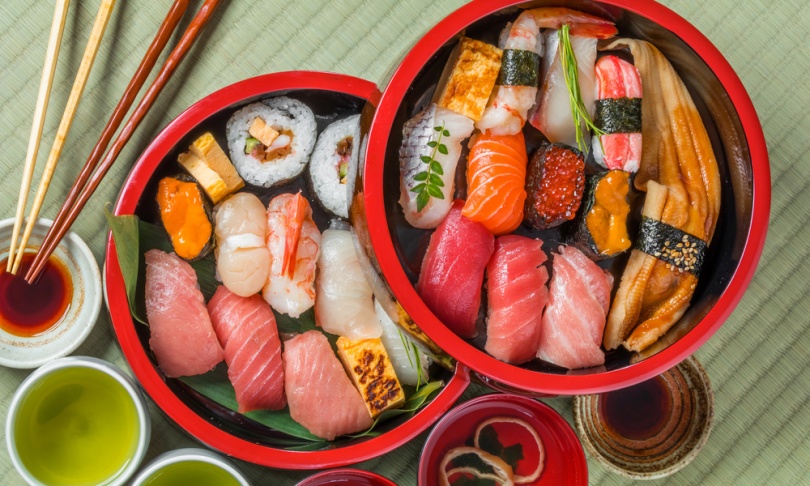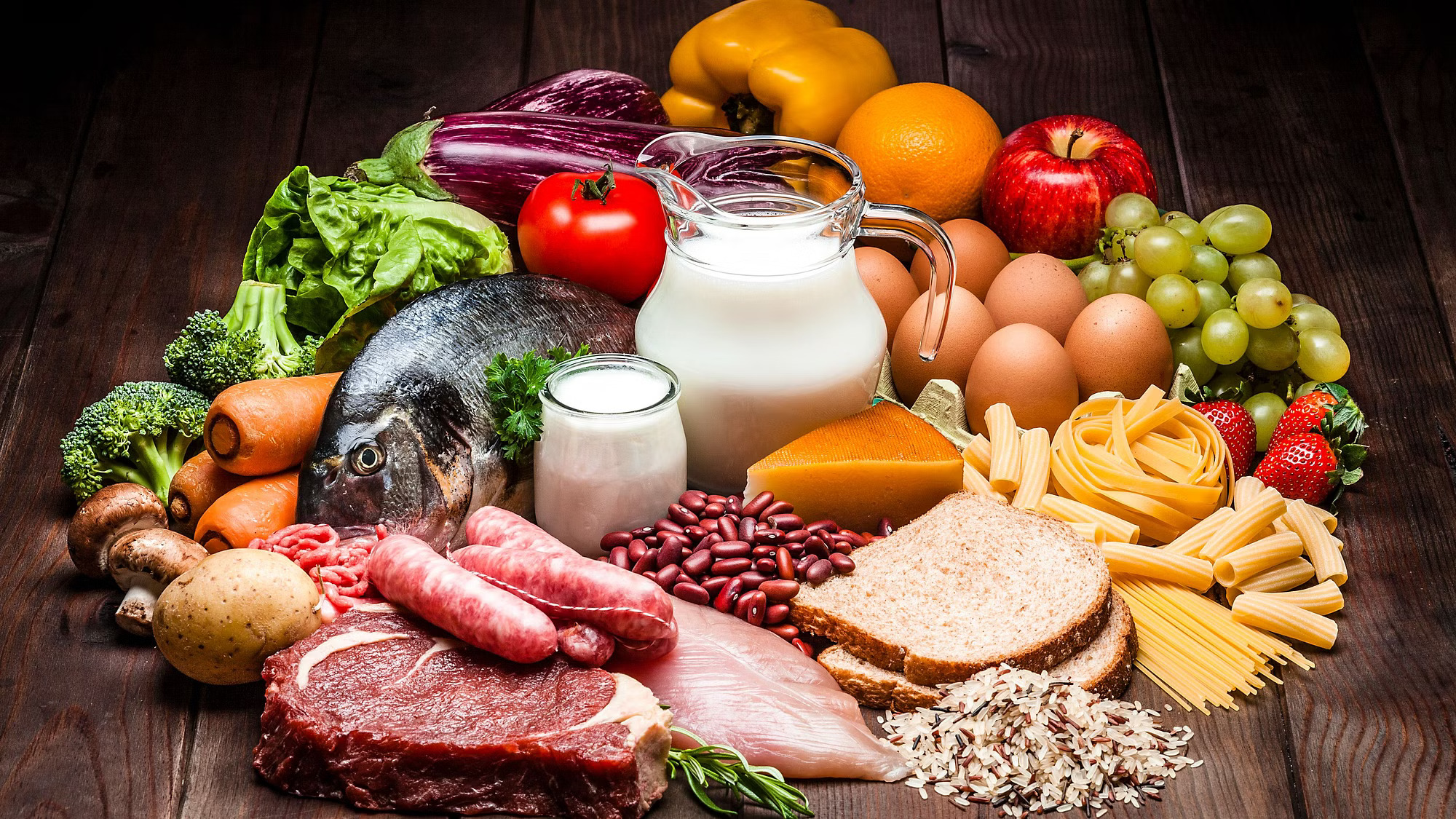Food in Tokyo

SUSHI
Made from marinated rice and rolled with a variety of seafood and vegetable toppings, sushi can leave unprepared beginners in a daze. And more advanced connoisseurs of Japanese cuisine can immediately proceed to a more detailed tasting. Several types of sushi (or “zushi”, as the Japanese themselves say) are considered the main ones:
Makizushi (nori roll) – A typical sushi roll can be wrapped with a thin omelet, soy paper, cucumber, or seaweed. Pickled rice is served with various fillings: crab-flavored fish cake, seafood, pickled radish or lotus root. The largest type of nori roll is the futomaki.
Nigirizushi – most of all, this dish is reminiscent of sashimi: it is also made from pieces of raw fish. The main difference between nigiri is that it is served with a pile of pressed oblong sushi rice, while sashimi is not supposed to be a side dish (or served separately).
Inarizushi is a bag of fried tofu filled with rice.
Tirashizushi is often referred to as “loose” sushi. It is served in a bowl with rice and traditional ingredients: shrimp, mushrooms, crushed scrambled eggs and bamboo shoots.
RAMEN
When talking about instant soup, many people think of the usual bag noodles. Ramen breaks those stereotypes! Yes, this dish is prepared very quickly and is included in the menu of any Japanese fast food. But this circumstance does not affect its excellent taste – it is not without reason that this soup is loved by almost all Japanese. Restaurants specializing in ramen usually serve two types of soup: kotteri (with rich broth) and assari (with light broth). The broth, in turn, can have four different tastes.

Shoyu (with soy sauce) is a fish, beef or chicken broth seasoned with the most popular additive in Japanese cuisine – soy sauce.
Miso (with fermented soybean paste) – ramen with a spicy seasoning made from fermented soybeans – one of the examples of culinary “fusion”. Invented in the mid-60s on the island of Hokkaido, miso ramen immediately entered the main dishes of Japanese gastronomy and is now found on almost any menu.
Ramen with fish pieces, fish roll, fried chicken, vegetables, seaweed, green onion and soft boiled egg is a must try in Japan!
IZAKAYA
Izakaya drinking establishments are an important part of Japanese life. Already at 5 pm, their doors are wide open: at the end of the working day, workers and employees are sent here in a dense stream for cheap food and drinks. There are thousands of izakai in Tokyo alone! Ask around: almost every local will be happy to share the address of their favorite bar. And if you like to take it easy, then head straight to one of these places.
TONKATSU
In addition to its incomparable taste, tonkatsu is good because you can order it almost everywhere. One of the most popular Japanese dishes is pork chop, rolled in flour, eggs and breadcrumbs panko (airy breadcrumbs and spices) and fried until crispy. Tonkatsu is served with various side dishes (most often with Japanese curry) or simply as it is – straight from the deep fryer. Classic tonkatsu sets include homemade sauce, chopped cabbage, rice, and a bowl of hot miso soup.
SHABU-SHABU
The name of this Japanese favorite dish comes from the whistling sound that occurs when ingredients are boiled in a cauldron of boiling water. These ingredients usually include pieces of tender beef, a variety of vegetables and tofu cheese, which are served to guests for self-cooking. By the end of the meal, an incredibly rich broth is obtained. Pour it over rice and enjoy your homemade dish to the last spoonful.
SOBA
Tokyois love this dish! Vitamin-rich buckwheat noodles were widely used in Japan as early as the Edo period (1603–1868) as a supplement to nutrients missing from white rice. Soba is eaten both hot and cold. The main sauce served with this dish is called tsuyu. Cold soba is served with nori seaweed, grated daikon, bambia or vegetables, eaten with chopsticks and dipped in tsuyu sauce. Hot soba is already boiled in broth with this sauce and can be served with anything from small fish rolls to mushrooms. Soba is so delicious that you can’t help but smack your lips when you eat it. Don’t be shy – the Japanese sitting next to you will still do it louder than you.
SAKE
When trying traditional Japanese food, one should not forget about traditional Japanese drinks. Well, how can you do without a glass of sake? However, other local drinks should not be left without your attention: shochu, umeshu plum wine, amazake…
Sake, the national drink of Japan, is essentially rice wine, which is made using a technology that is more reminiscent of beer. That is why its taste is softer than that of wine, but more fruity than that of beer.
It is most often drunk in cocktails, but it will not be a sin to order it in its pure form – shochu will be served with ice in a whiskey glass.
Amazake is a traditional fermented rice drink served warm and sweetened. Amazake is perfect as a dessert after a hearty family dinner or as a hangover cure that you might need after a long tasting of sake and shochu.
Green tea – when ordering tea in Japan, you hardly have to specify its color – non-green tea is almost non-existent here. But knowing a few basic types of this drink can be useful: matcha (powdered tea), genmaicha (a mixture of tea leaves and fried brown rice) and ryokucha (regular brewed tea).





